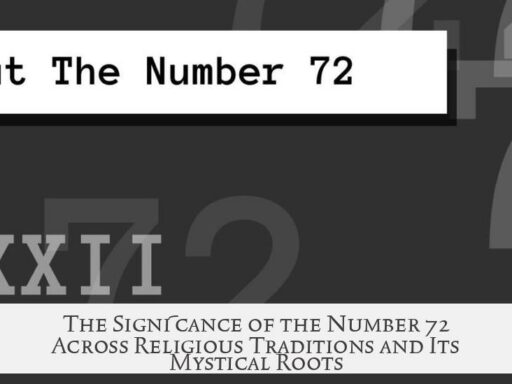Taikō is a historical Japanese title meaning “retired regent.” It specifically refers to a former holder of the position of kanpaku (関白), which was the chief advisor and de facto ruler for the Emperor of Japan during certain periods. In modern contexts, especially in popular culture such as the new show Shōgun, the title Taikō is synonymous with Toyotomi Hideyoshi, one of Japan’s most famous historical figures and unifiers. The Taikō role carries both political and symbolic importance as a retired regent who often retained significant influence after formally stepping down.
The title Kanpaku originated in the Heian Era Japan. While officially the Emperor reigned, the Kanpaku acted as the regent, managing political affairs and exercising real power. This role was traditionally reserved for members of the noble Fujiwara clan, who controlled this advisory position for centuries. When a Kanpaku retired, he sometimes adopted the title Taikō, signaling his continued status and influence albeit without the direct responsibilities of regency.
By the Kamakura Era, the power of the Kanpaku declined with the rise of samurai clans. Yet, the title remained ceremonially significant in the imperial court. During the turbulent Sengoku (Warring States) period, political fragmentation meant the Kanpaku’s traditional power was largely symbolic until Toyotomi Hideyoshi restored central authority.
Toyotomi Hideyoshi’s story is crucial in understanding the significance of Taikō. Born a peasant in 1537, Hideyoshi rose from humble origins as an ashigaru (foot soldier) to become one of Japan’s great unifiers. He entered the inner circle of Oda Nobunaga, a powerful warlord also known as a great unifier. After Nobunaga’s death, Hideyoshi outmaneuvered rivals and consolidated power, controlling most of Japan.
However, Hideyoshi’s low birth barred him from becoming Sei-I-Tai-Shogun (military dictator). To gain political legitimacy, he was adopted into the prestigious Fujiwara clan family, allowing him to ascend to the Kanpaku position in 1585. This appointment made Hideyoshi the Emperor’s official regent, a title that symbolized de facto rule over Japan. He also received the family name Toyotomi at this time.
In 1592, after the death of his only son, Hideyoshi appointed his nephew Hidetsugu as the new Kanpaku and himself took on the Taikō title, officially retiring from regency. This move was designed to solidify the succession and ensure continuity of the Toyotomi regime. Hidetsugu’s appointment fell apart after Hideyoshi fathered another son, sparking a succession crisis that led Hideyoshi to force Hidetsugu’s suicide.
The death of Hideyoshi, the Taikō, created a power vacuum that serves as the backdrop for the Shōgun series. His young son’s succession left Japan unstable. Various powerful clans scrambled to fill the void. Tokugawa Ieyasu, known as Toranaga in the show, was one of five elders appointed to govern Japan during the child ruler’s minority. Ieyasu eventually completed Hideyoshi’s campaign of unification under his own terms.
| Term | Meaning | Significance |
|---|---|---|
| Kanpaku (関白) | Chief imperial regent | De facto ruler behind Emperor; traditionally Fujiwara clan |
| Taikō (太閤) | Retired regent | Title for retired Kanpaku, retains influence (e.g., Hideyoshi) |
| Sei-I-Tai-Shogun | Military dictator | Chief samurai leader; Hideyoshi was ineligible due to ancestry |
The distinction between the title Taikō and the similar-sounding “taiko” drum (太鼓) is important. The title’s long “o” vowel differentiates it. Taikō combines the characters for “big” or “plump” (太) and “small gate” (閤), metaphorically representing access to the imperial family’s inner circle.
In Clavell’s novel and the show, referring to Hideyoshi as Taikō emphasizes his unique role in Japanese history. He stands as a symbol of unification and power centralized under a regent who once retired but still shaped the country’s destiny. The portrayal reflects the period’s complex succession battles and political maneuvering after Hideyoshi’s death.
Overall, Taikō denotes a specific status: a retired imperial regent with continued authority, exemplified by Toyotomi Hideyoshi. The title encapsulates a moment in Japanese history where power, legitimacy, and succession intertwined during a fragile transition between eras.
- Taikō literally means “retired regent,” a former Kanpaku who retains influence.
- The Kanpaku was the Emperor’s chief advisor, wielding real power from the Heian Era onward.
- Hideyoshi was the most famous Taikō, elevating himself despite low birth by adoption into nobility.
- Hideyoshi’s retirement and title Taikō reflected succession plans and stabilized his regime temporarily.
- The death of Taikō Hideyoshi led to political instability central to the plot of Shōgun.
- Taikō is distinct from the Japanese drum “taiko” by pronunciation and meaning.
- The title symbolizes access to imperial power, blending political and ceremonial roles.
What Is Taikō? Unraveling the Enigmatic Title in the New Show Shōgun
So, what exactly is Taikō? The term might sound like a catchy drumbeat to many, but in the context of the new show Shōgun, Taikō carries a rich tapestry of political power, court intrigue, and samurai-era drama. Simply put, Taikō is the title given to a retired regent, and in popular history, it is intimately linked with the legendary figure Toyotomi Hideyoshi.
Now, let’s unpack this fascinating title and the tangled web surrounding it. If you’ve just started watching Shōgun and wondered about Taikō, buckle up—this journey combines history, politics, and a touch of soap opera intrigue.
Taikō: More Than Just a Name
First off, the word Taikō—pronounced “Tai-koh” with a long “o”—has a very specific historical meaning. It shouldn’t be confused with the Taiko drum (pronounced with a short “o”), though both share the same kanji root meaning “big” or “great”. Taikō literally means “retired regent,” a title reserved for those stepping down from tremendous power but often still wielding influence behind the scenes.
Historically, the Taikō emerged from the position of kanpaku, loosely translated as regent. The kanpaku was the chief advisor to the Emperor of Japan but wielded real power—especially during Japan’s Heian period. In many ways, the kanpaku was the man pulling strings while the Emperor sat on the throne like an ornate figurehead.
Once the kanpaku retired, they took on the title Taikō, signaling a shift from active rule to a subtle role backstage. In some cases, these retired regents kept controlling the puppet show, continuing to pull the strings through their successors.
From Court Nobility to Warlord: The Rise of Hideyoshi
What makes Taikō truly legendary—and relevant for viewers of Shōgun—is Toyotomi Hideyoshi. Born a lowly peasant in 1537, Hideyoshi’s rise is one of history’s most inspiring rags-to-riches stories. Starting as an ashigaru, a foot soldier, he worked his way into the inner circle of Oda Nobunaga, a powerful warlord striving to unify the fractious Japanese islands during the turbulent Sengoku (Warring States) period.
After Nobunaga’s dramatic betrayal and death at Honno-ji, Hideyoshi raced to avenge his lord. His victory placed him at the top of Japan’s power pyramid, despite his humble origins—a remarkable feat in a society fiercely protective of aristocratic bloodlines.
But here’s the twist: Because of his low birth, Hideyoshi couldn’t become Sei-I-Tai-Shogun—the supreme military commander title traditionally reserved for samurai elite. Instead, he brilliantly maneuvered to be adopted into the powerful Konoe family, part of the Fujiwara clan, Japan’s aristocratic nobility. This adoption was a game-changer, elevating him into the noble class known as kuge, distinct from the samurai warrior buke. While samurai held military power, the kuge had ceremonial and courtly influence.
In 1585, Hideyoshi secured the title kanpaku, the Emperor’s regent, cementing his legitimate authority over the country. It was then he also received the surname Toyotomi—shedding his previous identity as Hashiba Hideyoshi. This manipulation of social structures and titles reveals an extraordinary political mind at work.
Retirement, Rule, and the Birth of Taikō
Retirement from the kanpaku role didn’t mean Hideyoshi vanished into the shadows. Instead, he stepped down but took the title Taikō. This move officially marked his exit from the regency but allowed him to remain the real power broker behind the throne. It’s akin to a CEO handing over the title but keeping the majority of stock shares.
After his son’s death, Hideyoshi adopted his nephew Hidetsugu as heir. Hidetsugu became the new kanpaku, while Hideyoshi embraced the Taikō status. The plan was to assure his regime’s stability, something Japan desperately needed after over two centuries of near-constant warfare. Unfortunately, this arrangement didn’t last—Hideyoshi later forced Hidetsugu to commit suicide, following the birth of his own son, plunging the Toyotomi house into a dangerous succession crisis.
The Power Vacuum and the Setting of Shōgun
The new Shōgun starts precisely at the death of Taikō (Hideyoshi) and the political scramble it triggers. The young heir inherits a fragile Japan. Every powerful clan eyes the throne, primed for a power grab. The show’s intense drama unfolds amid this chaos.
One key figure: Tokugawa Ieyasu—known as Toranaga in the show—one of the five elders appointed to the regency council after Hideyoshi’s death. Ieyasu’s mission? To finish Hideyoshi’s work on his own terms, unifying Japan. Yet, unification here is no simple “happy ending”—it’s a complex dance of alliances, betrayals, and warlords scheming for ultimate control. This turbulent political scene makes Taikō a pivotal historical keystone in the story.
Taikō — More Than a Title, a Symbol
Why does the Taikō matter beyond just historical trivia or television drama? The title represents a unique concept in Japanese power dynamics where retirement didn’t necessarily mean letting go. It symbolizes how power can shift, sometimes subtly, within the layers of political offices and ceremonial roles.
The kanji for Taikō (太閤) is telling: 太 (tai) means “big” or “plump,” while 閤 (kō) means “small gate.” It’s a fitting metaphor, describing how one gains access to the imperial family’s inner sanctum—through a small gate—but makes a big impact. It links the retired regent with both access and significant influence over Japan’s ruling elite.
What Makes Taikō’s Story Relevant Today?
Shōgun illuminates Taikō’s complex legacy, showcasing how Japan’s path to unification wasn’t just about battles. It was about clever strategy, social climbing, and navigating rigid class systems. Hideyoshi’s story as Taikō teaches us about adaptability and political acumen.
Have you ever thought about how power works behind the scenes? Who truly holds authority when titles change hands? Taikō perfectly embodies these timeless questions.
For viewers and history buffs alike, understanding Taikō enriches the experience of Shōgun. It changes the narrative from a simple warrior tale to a layered political drama. The show brings alive the tension between duty, ambition, and legitimacy in a period when Japan was reborn.
In Summary: The Taikō in a Nutshell
- Taikō equals “retired regent,” a title linked primarily with Toyotomi Hideyoshi.
- The kanpaku was the active regent, often the real authority behind the Emperor.
- Hideyoshi’s path to Taikō was extraordinary—from peasant to the most powerful man in Japan.
- Retiring as Taikō let Hideyoshi maintain influence while installing a successor.
- Shōgun opens at Taikō’s death, signaling political chaos and power struggles.
- Tokugawa Ieyasu (Toranaga) was a key player seeking to complete Hideyoshi’s unification legacy.
- The title also symbolizes access to power, a gate to the elite imperial family.
If you’re captivated by political intrigue in historical settings, the story of Taikō in Shōgun offers a vivid backdrop: a retired ruler who fights to keep his legacy against a fractious and dangerous Japan. That story is not just about history but about power’s nature itself—an echo that resonates far beyond 16th-century Japan.


